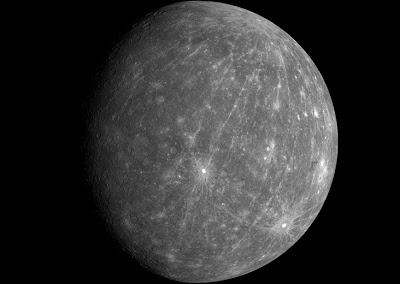Mysterious Mercury
Cosmologists and cosmogonists propose hypotheses, theories and models about the universe and the solar system. Those who persist in using an evolutionary basis keep finding flaws in their models that need to be explained away. Otherwise, they may have to actually admit that the facts support the biblical creation model far better, and with much less fuss, than an evolutionary model. In fact, Mercury supports creationists' predictions.
Mercury, the smallest planet and closest to the sun, presents perplexing puzzles that provoke pique among evolutionists. That is, Mercury does not act like it is supposed to act.
 |
| NASA / Johns Hopkins University Applied Physics Laboratory / Carnegie Institution of Washington |
The smallest planet of our solar system holds some big mysteries for secular astronomers, and it continues to delight creationists. Mercury is only 38 percent the diameter of Earth, making it the smallest and least massive of the eight planets. It is the innermost planet of the solar system, orbiting the sun at a distance of only 36 million miles. That is nearly three times closer to the sun than Earth is. Mercury is a solid, rocky world, with only a trace of an atmosphere. It has mountains, valleys, plains, and craters—lots and lots of craters! In appearance, Mercury resembles a 40 percent larger (in radius) version of the moon. But when it comes to creation research of the early solar system, Mercury provides many interesting clues. The unusual characteristics of this world make for an intriguing study.You can read the rest of "The Solar System: Mercury", here.